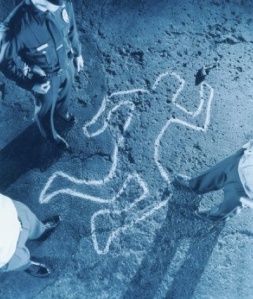Applying Reliable Techniques & Methods for Crime Scene Reconstruction
My tough and driven heroine, Emily Stone, from my two novels (Compulsion, Dead Game) uses her innate skills and abilities to try to reconstruct the crime scene in order to track down serial killers and child abductors. The difference in her procedure at crime scenes is that most of law enforcement doesn’t know it’s a crime scene yet. She carefully backtracks, profiles the suspect, and eventually uncovers evidence that leads to the killer. She must reconstruct the crime scene to gather all the evidence anonymously for law enforcement.
Crime scene reconstruction is basically like a big life-size jigsaw puzzle and every crime scene is different from the last. Of course the most important question is “how” was the crime committed.
The investigator or profiler must observe all the events and related clues to determine if anything can be learned from each of these observations. Propose alternative explanation for the events that have taken place. The investigator then can eliminate anything that doesn’t have the unbiased analytical logic and critical thinking.
There are basic roles of evidence that assists with reconstruction classifications.
- Sequential
This evidence helps to establish when an event occurred, such as footprint over a tire track or blood stains under the glass of a broken window.
- Directional
This evidence shows where something was going, such as the direction of footprints or tire tracks.
- Locational or Positional
This evidence shows where something has happened, such as single fingerprints on the inside of a passenger car window or liver mortis that has settled in the lower portion of the deceased body.
- Action
This evidence helps to define anything that has happened during the commission of a specific crime, such as gunshot wounds or a broken window or door.
- Contact
This evidence can demonstrate whether two people or objects were at one point, such as trace evidence (hair, fiber, soil) transferred from object to person or vice versa.
- Ownership
This evidence assists the investigator in answering the question of “who”, such as written signatures or email.
- Associative
This evidence is generally in the form of trace evidence that can be identified, such as a bloody footprint or fibers found on a body.
- Limiting
This type of evidence can be extremely important and can establish if there are secondary crime scenes, such as a deceased victim without a wallet or jewelry.
- Inferential
This evidence is based in the investigator’s inference that the crime occurred, but evidence hasn’t been actually found.
- Temporal
This evidence refers to the passage of time in relevance to the actual commission of the crime, such as a broken clock or body temperature.
- Psychological
This is referred to as motivational evidence, when a perpetrator must satisfy a personal need or motivation for committing the crime.
* * *
When an investigator or the fictional character of Emily Stone first sees a potential crime scene, there are many things to consider that will eventually lead to the suspect and to solving the crime.
Blog: www.authorjenniferchase.com/
Website: www.jenniferchase.vpweb.com/
Crime Watch Blog: www.emilystonecrimewatch.wordpress.com/
Book & Crime Talk: www.blogtalkradio.com/jennifer-chase/
Books: Compulsion = Dead Game = Silent Partner = Screenwriting
Welcome to
CrimeSpace
CrimeSpace Google Search
© 2024 Created by Daniel Hatadi.
Powered by
![]()

You need to be a member of CrimeSpace to add comments!